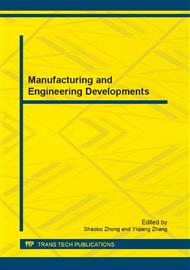[1]
Akyildiz I F, Su W, Sankarasubramaniam Y, et al. Wireless sensor networks: A survey[J]. Computer Networks. 2002, 38(4): 393-422.
DOI: 10.1016/s1389-1286(01)00302-4
Google Scholar
[2]
Heinzelman W R, Chandrakasan A, Balakrishnan H. Energy-efficient communication protocol for wireless microsensor networks[C]. Maui, USA: IEEE, Los Alamitos, CA, USA, 2000: 223-225.
DOI: 10.1109/hicss.2000.926982
Google Scholar
[3]
Chengfa L, Chengfa L, Mao Y, et al. An energy-efficient unequal clustering mechanism for wireless sensor networks[C]. Proeeedings of the 2nd IEEE International Conference on Mobile Ad Hoe and Sensor Systems(MASS), 2005: 597-604.
DOI: 10.1109/mahss.2005.1542849
Google Scholar
[4]
Younis O, Fahmy S. HEED: A hybrid, energy-efficient, distributed clustering approach for ad hoc sensor networks[J]. IEEE Transactions on Mobile Computing. 2004, 3(4): 366-379.
DOI: 10.1109/tmc.2004.41
Google Scholar
[5]
Akkaya K, Younis M. A survey on routing protocols for wireless sensor networks[J]. Ad Hoc Networks. 2005, 3(3): 325-349.
DOI: 10.1016/j.adhoc.2003.09.010
Google Scholar
[6]
Du X, Xiao Y, Dai F. Increasing network lifetime by balancing node energy consumption in heterogeneous sensor networks[J]. Wireless Communications and Mobile Computing. 2008, 8(1): 125-136.
DOI: 10.1002/wcm.452
Google Scholar
[7]
Mhatre V P, Mhatre V P, Rosenberg C, et al. A minimum cost heterogeneous sensor network with a lifetime constraint[J]. Mobile Computing, IEEE Transactions on Mobile Computing, IEEE Transactions on. 2005, 4(1): 4-15.
DOI: 10.1109/tmc.2005.2
Google Scholar
[8]
Liu zhiping, Li huiThe design of heterogeneous sensor networks based on high-energy nodes[J]. Journal of Henan Polytechnic University. 2011, (2).
Google Scholar


